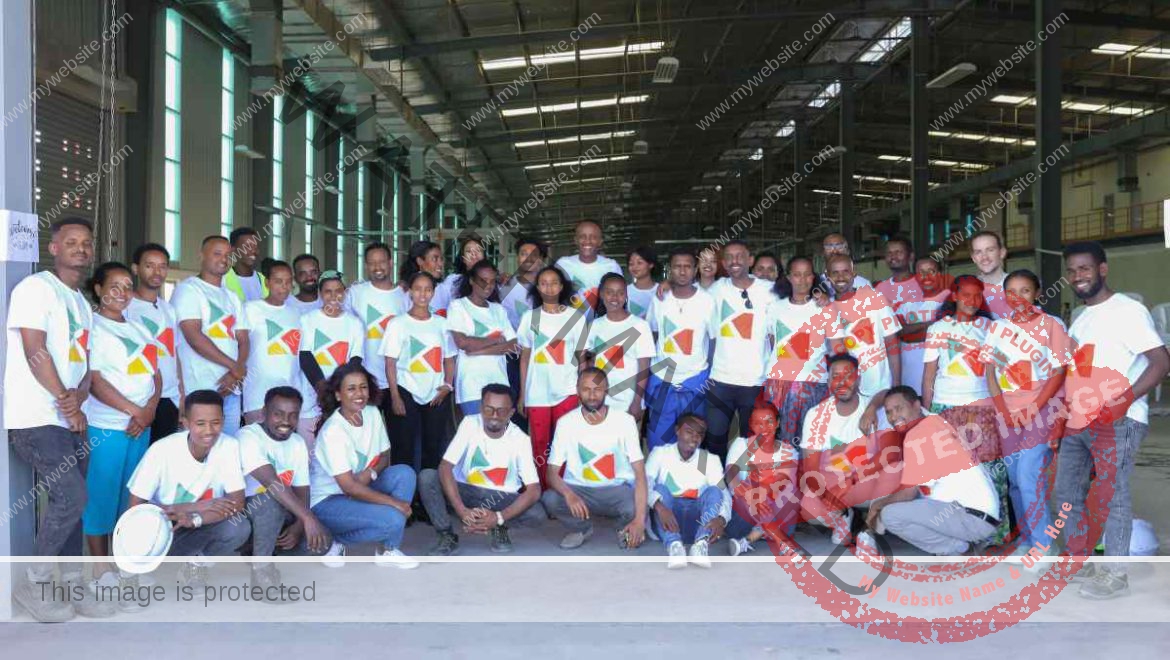Jonathan Strimling faced a dilemma. His company had spent nine years working on chemical processes that could turn old cardboard boxes into high-quality building insulation. The good news was the team had finally cracked it: CleanFiber’s technology pumped out insulation — really good insulation. It had fewer contaminants and produced less dust than other cellulose insulation made from old newspapers. Insulation installers loved the stuff.
Now CleanFiber had to make more of it. A lot more.
Many founders and CEOs might be envious of the problem. But the transition from science project to commercial outfit is one of the hardest to pull off.
“It’s hard to launch your first-of-breed plant,” Strimling, the company’s CEO, told TechCrunch. “It did cost us more than we expected. It took us longer than we expected. And that’s fairly typical.”
Any startup is laced with a certain amount of risk. Early-stage companies are often unsure whether their technology will work or whether their product will find enough customers. But at that point, investors are more willing to stomach the risk. They know fresh startups are a gamble, but the amount required to get one off the ground is relatively small. It’s easier to play the numbers game.
The game changes, though, when startups emerge from their youth, and it becomes especially challenging when the company’s products are made of atoms, not ones and zeros.
“There’s still a lot of hesitancy to do hardware, hard tech, infrastructure,” Matt Rogers, co-founder of Nest and Mill, told TechCrunch. Those awkward middle stages are particularly hard for climate startups, which are dominated by hardware companies.
“You can’t solve climate with SaaS,” Rogers said.
The problem has come to dominate conversations about finance and climate change. There has been an explosion of startups in recent years that seek to electrify homes and buildings, slash pollution in industrial processes, and remove planet-warming carbon from the atmosphere. But as those companies emerge from the lab, they’re finding it hard to raise the kind of money they’ll need to build their first commercial scale project.
“That transition is just a really, really difficult one,” said Lara Pierpoint, managing director of Trellis Climate at Prime Coalition. “It’s not one that VC was designed to navigate, nor is it one that institutional infrastructure investors were designed to take on from a risk perspective.”
Some call this the “first of a kind” problem. Others call it the “missing middle,” describing the yawning gap between early-stage venture dollars and expertise on one end and infrastructure funds on the other. But those terms paper over the severity of the problem. A better term might be what Ashwin Shashindranath, a partner at Energy Impact Partners, calls “the commercial valley of death.”
Sean Sandbach, principal at Spring Lane Capital, puts it more bluntly, calling it “the single greatest threat to climate companies.”
Financing hardware is hard
The valley of death isn’t unique to climate tech companies, but it poses a bigger challenge for those that seek to decarbonize industry or buildings, for example. “When you’re making hardware or infrastructure, your capital needs are just very different,” Rogers said.
To see how, consider two hypothetical climate tech companies: one is a SaaS startup with revenue that recently raised a $2 million round and is looking for another $5 million. “That’s a good story for a traditional venture firm,” said Abe Yokell, co-founder and managing partner at Congruent Ventures.
Contrast that with a deep tech company that doesn’t have any revenue and is hoping to raise a $50 million Series B to fund its first-of-a-kind project. “That’s a harder story,” he said.
As a result, “a good portion of our time consistently is spent with our portfolio companies helping them bring on the next stage of capital,” Yokell said. “We are finding people to fill the gap. But it’s not like you go to 20 funds. You go to 100 or 200.”
It’s not just the dollar amounts that make it more challenging to raise money. Part of the problem lies in the way startup financing has evolved over the years. Where decades ago venture capitalists used to tackle hardware challenges, today the majority tend to avoid them.
“We have a capital stack in our economy that was built for digital innovation,” rather than hardware advances, said Saloni Multani, co-head of venture and growth at Galvanize Climate Solutions.
How startups die in the middle
The commercial valley of death has claimed more than a few victims. Over a decade ago, battery manufacturer A123 Systems worked feverishly to build not just its own factories, but also an entire supply chain to provide cells to companies like GM. It ended up being sold for pennies on the dollar to a Chinese auto parts giant.
More recently, Sunfolding, which made actuators to help solar panels track the sun, went belly up in December after it ran into manufacturing challenges. Another startup, electric bus manufacturer Proterra, declared bankruptcy in August in part because it had signed contracts that were unprofitable — making the buses simply cost more than anticipated.
In Proterra’s case, the struggles of mass manufacturing buses were compounded by the fact that the company was also developing two other business lines, one that focused on battery systems for other heavy-duty vehicles and another that specialized in charging infrastructure for them.
Many startups fall into this trap, said Adam Sharkawy, co-founder and managing partner at Material Impact. “As they get some early success, they are looking around themselves and saying, ‘How can we build our ecosystem? How can we pave the path to really scaling? How can we build infrastructure to prepare ourselves to scale?’” he said. “They lose sight of the core value proposition that they’re building, that they need to ensure execution on, before they can start to linearly scale the rest.”
Finding talent to bridge the gap
Maintaining focus is one part of the challenge. Recognizing what to focus on and when is another. That can be learned with firsthand experience, something that’s often lacking in early-stage startups.
As a result, many investors are pushing startups to hire people experienced in manufacturing, construction, and project management earlier than they might otherwise do. “We always advocate for the early hiring of roles such as project manager, head of engineering, head of construction,” said Mario Fernandez, head of Breakthrough Energy Catalyst, which invests in large demonstrations and first-of-a-kind projects.
“Team gap is a big thing that we’re trying to address,” said Shashindranath, the EIP partner. “Most companies that we invest in have never built a large project before.”
To be sure, having the right team in place won’t matter if the company runs out of money. For that, investors have to dig deeper into their wallets or look elsewhere for solutions.
Money matters
Writing more and bigger checks is one solution that many firms pursue. Many investors have opportunity funds or continuity funds reserved for the most successful portfolio companies to ensure they have the resources required to survive the valley of death. Not only does that give startups bigger war chests, but it can also help them access other pools of capital, Shashindranath said. Companies with bigger bank accounts have “additional credibility” with debt financiers, he said. “It’s signaling that helps in a lot of different ways.”
For companies building a factory, asset-backed equipment loans are also an option, said Tom Chi, founding partner at At One Ventures, “where in the worst-case scenario, you’re able to sell back the equipment at 70% of the value and you only have a little bit of debt cap to go repay.”
Yet for companies at the bleeding edge, like a fusion startup, there are limits to how far that playbook can take them. Some projects simply need lots of money before they’ll bring in meaningful revenue, and there aren’t many investors who are well positioned to bridge the gap.
“Early-stage investors, for a whole host of reasons, have struggled to support that middle process largely owing to the scale of their funds, the scale of the checks that they can write, and, to be candid, the realities of the returns that these assets are ultimately able to produce,” said Francis O’Sullivan, managing director at S2G Ventures. “Venture-like returns are exceptionally difficult to achieve once you move into this larger, more capital intensive, more project orientated, commodity-producing world.”
Typical early-stage venture investors aim for tenfold returns on investments, but O’Sullivan argues that perhaps a better mark for hardware-focused climate tech startups would be 2x or 3x. That would make it easier to attract follow-on investment from growth equity funds, which look for similar returns, before handing things off to infrastructure investors, which tend to aim for 50% returns. Problem is, most investors aren’t incentivized to work together, even within large money managers, he said.
On top of that, there aren’t many climate-focused VC firms that have the scale to provide funding in the middle stages, said Abe Yokell. “What we’re really betting on at this point is that there’s enough overlap [in interests] for the traditional venture firms to come in,” he said. “Now the problem, of course, is that over the last couple of years traditional venture has been very beat up.”
Bringing in more capital
Another reason traditional venture firms haven’t stepped up is because they don’t truly understand the risks associated with climate tech investments.
“In hardware, there are things that look like they have technology risk, but actually don’t. I think that’s a massive opportunity,” said Shomik Dutta, co-founder and managing partner of Overture. “Then there are things that look like they have technology risk and still do. And so the question is, how do we bifurcate those pathways?”
One firm, Spring Lane, which recently invested in CleanFiber, has developed a sort of hybrid approach that draws on both venture capital and private equity. The firm performs a large amount of due diligence on its investments — “on par with the large infrastructure funds,” Sandbach said — which helps it gain confidence that the startup has worked through the scientific and technical challenges.
Once it decides to proceed, it often uses a combination of equity and debt. After the deal closes, Spring Lane has a team of experts who help portfolio companies tackle the challenges of scaling up.
Not every firm will be inclined to take that approach, which is why Pierpoint’s firm, Prime Coalition, advocates for more so-called catalytic capital, which includes everything from government grants to philanthropic dollars. The latter can absorb risk that other investors wouldn’t be keen to accept. Over time, the thinking goes, as investors get a deeper appreciation of the risks involved in middle-stage climate tech investing, they’ll be more inclined to place bets on their own, without a philanthropic backstop.
“I’m a big believer that human beings de-risk things through knowledge,” Multani said. “The reason I love seeing generalist firms invest in these companies is because it means they spent a bunch of time understanding the space, and they realize there’s an opportunity.”
However it happens, creating climate solutions through technology is an urgent challenge. The world’s countries have set a goal to eliminate carbon pollution in the next 25 years, which isn’t that long if you consider that it takes several years to build a single factory. To keep warming below 1.5°C, we’ll have to build a lot of factories, many of which have never been built before. And to do that, startups will need lots more money than is available today.
At CleanFiber, Strimling and his team haven’t just completed the company’s first factory, but have also expanded it. It’s now producing enough insulation for 20,000 homes every year. The next few facilities should take less time to build, but the hurdles on the road to opening the first were significant. “When launching the first-of-breed plant, you do run into things you don’t expect,” Strimling said. “We ran into a pandemic.”
Replicating that success across a range of industries won’t be easy or cheap. Still, plenty of investors remain optimistic. “The future will look different from the past,” Multani said. “It must.”

















